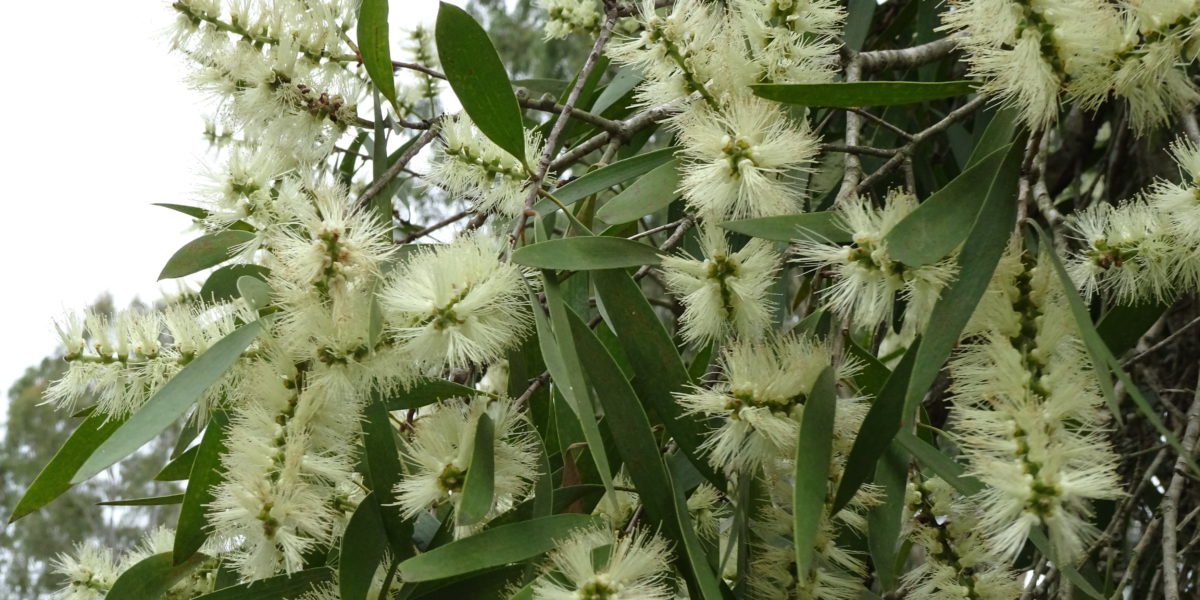
Melaleuca leucadendra
March 10, 2018
Meleuca leucadendra is a large tree, usually less than, but sometimes more than 20 m (70 ft) tall. Its thick bark is papery, usually white but also pinkish or cream and it has weeping branches. Its leaves and young branches are covered with fine, short, white hairs when young but become glabrous as they mature. The leaves are arranged alternately, 75–270 mm (3–10 in) long, 6.5–40 mm (0.3–2 in) wide, flat, narrow egg-shaped or lance-shaped and tapering to a point. The leaves have 5 (sometimes as many as 9) longitudinal veins and are often curved or sickle-shaped.
The flowers are cream, white or greenish-white and are arranged in spikes on the ends of branches which continue to grow after flowering, sometimes on the sides of branches or in the upper leaf axils. Each spike is up to 35 mm (1 in) in diameter, up to 80 mm (3 in) long and contains between 7 and 22 groups of flowers in threes. The petals are 3–4 mm (0.1–0.2 in) wide and fall off soon after the flower opens. The stamens are arranged in five bundles around the flower and each bundle contains 5 to 12 stamens. Flowering can occur at any time of the year and is followed by fruit which are woody capsules, 3.9–4.9 mm (0.15–0.19 in) long in loose clusters along the stems.